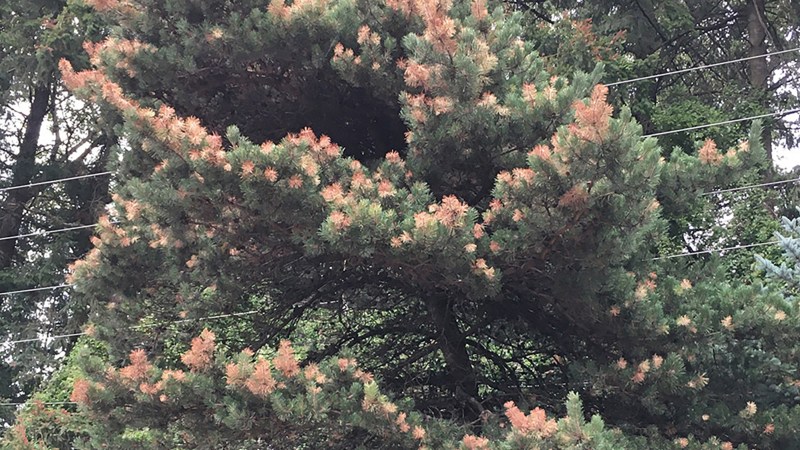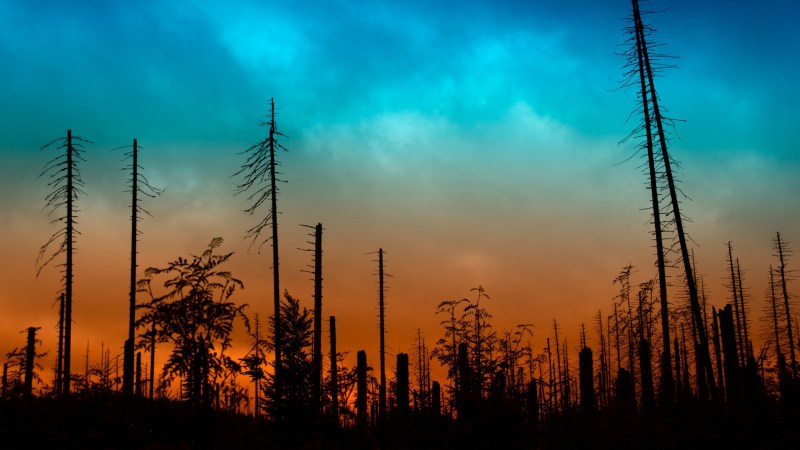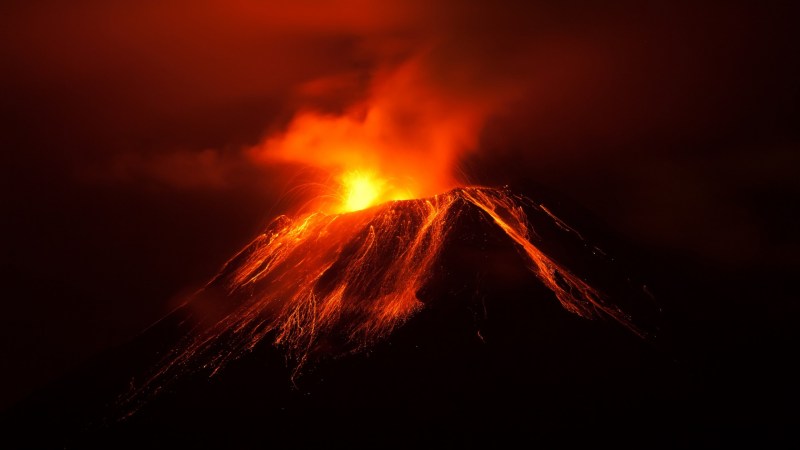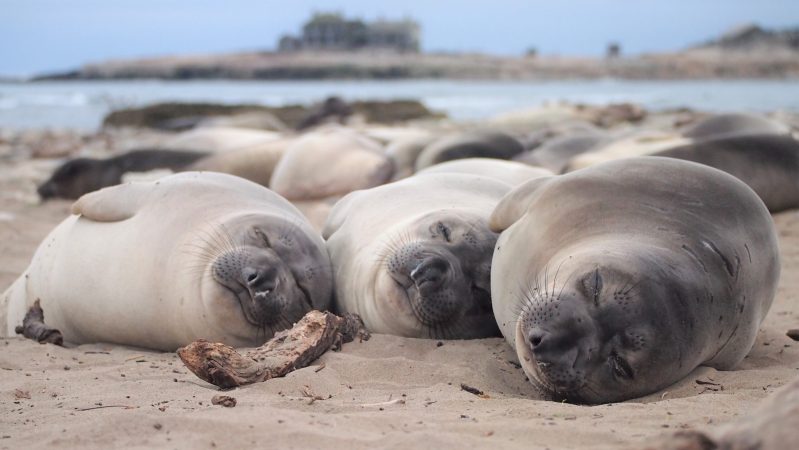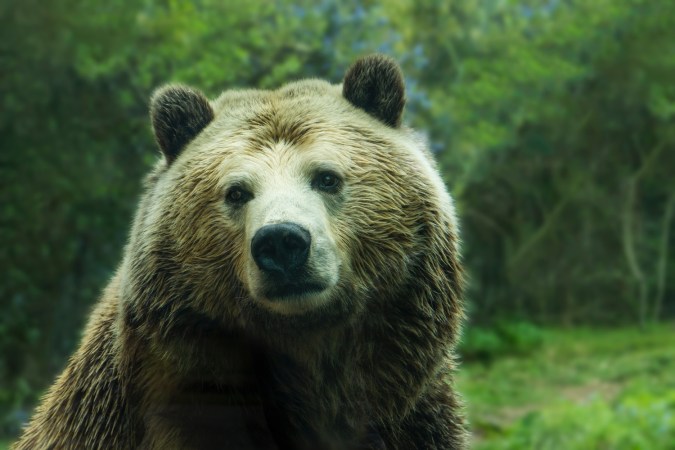

This article was originally featured on High Country News.
The first grainy film clip shows a black bear exploding out of the trail camera’s frame. In another, a mule deer stops munching wildflowers, backs away and takes off in the opposite direction. In a third, a moose doesn’t move at all but stands there, vigilant.
All three animals were reacting to sound bites from boomboxes in the woods, part of a study measuring the effect of outdoor recreationists’ noise on wildlife. The sounds included people chatting, mountain bikers spinning down trails—even just quiet footfalls. Each clip lasted less than 90 seconds.
The new study, currently underway in Wyoming’s Bridger-Teton National Forest, adds to mounting evidence that the mere presence of human sound, no matter how loud or quiet, fast or slow, changes how animals behave.
Don’t start feeling guilty about going for a hike just yet, though. Researchers are also trying to understand the significance of those reactions. For some species, hikers and bikers may be little more than a sideshow in a forest full of natural disturbances. For others, recreationists could have an impact similar to that of terrifying predators, invading habitat where food can be found, resulting in lower birthrates and even increasing deaths.
“The whole point of the study isn’t to vilify recreationists,” said Mark Ditmer, a research ecologist with the U.S. Forest Service’s Rocky Mountain Research Station and one of the study’s co-leaders. “It’s to understand where and when we cause the most disturbance.”
The idea that we must know and love the outdoors in order to protect it has held sway for over a century. Recreation built a constituency that helped protect wild places. But even decades ago, there was evidence that using wilderness—whether formally designated or otherwise—as a human playground caused its fair share of collateral damage. Trails crisscrossed woods without rhyme or reason; used toilet paper clung to bushes in the backcountry. Groups like Leave No Trace began reminding people to pack their garbage out with them, leave wildlife alone and poop responsibly.
Still, “non-consumptive recreation,” the wonky term for enjoying oneself outdoors without hunting or fishing, has generally been considered a net good. At best, outdoor recreation connects people to the land and sometimes inspires them to protect it—to write lawmakers, attend land-use meetings, support advocacy groups, perhaps remind others to stay on trails. At worst, it seems harmless.
“The whole point of the study isn’t to vilify recreationists.”
But recent studies show otherwise. There’s one out of Vail, Colorado, showing that increased trail use by hikers and mountain bikers disturbed elk so much the cows birthed fewer calves. Another out of Grand Teton National Park showed that backcountry skiers scared bighorn sheep during winter when food was scarce, with potentially lethal consequences. A 2016 review of 274 articles on how outdoor recreation affects wildlife revealed that 59% of the interactions were negative.
But most of the research looked the impacts of random encounters with hikers, backcountry skiers and others. Few questioned what exactly it is about humans that bothers wildlife so much, whether it’s the way we look, how we smell, or the sounds we make.
“Wildlife, more often than not, probably hear us before they see us, and so we can rarely observe if it is a negative response,” said Kathy Zeller, a co-leader on the new study and a research biologist with the Aldo Leopold Wilderness Research Institute and Rocky Mountain Research Station.
Ditmer and Zeller decided to record people biking and hiking in the woods. Last summer, they carted boomboxes of those recordings into the forest and set them up on game trails away from heavily traveled areas.
On and off for about four months, whenever a motion-sensitive camera at one end of the trail detected an animal, a boombox about 20 yards away played human sound bites—nothing like a ’90s dance party, just recordings of two hikers chatting or walking quietly, or of large and small groups of mountain bikers. Two more cameras near the boomboxes and one at the other end of the trail recorded wildlife reactions. They also played forest sounds and even blank tracks to be sure the animal wasn’t simply reacting to sudden noises or the almost imperceptible sound of a speaker turning on and off.
“Wildlife, more often than not, probably hear us before they see us, and so we can rarely observe if it is a negative response.”
Judging by an initial analysis of last summer’s data, large groups of mountain bikers were the most likely to cause animals like mule deer and elk to flee. Smaller groups of mountain bikers and hikers talking also triggered a response. The animals paused and listened to people walking, but didn’t flee as often.
Researchers are still figuring out how harmful those reactions are. Joe Holbrook, a University of Wyoming professor who was not involved in the study, suspects that it depends on the species and the time of year. He and his team have spent years studying wolverines’ reactions to backcountry skiers and snowmobilers. His most recent work shows that female wolverines don’t linger to feed on carcasses if backcountry recreationists are nearby. That suggests they’re losing access to good habitat, but he still doesn’t know if that means they’re also having fewer babies or dying more often.
And some wildlife gets accustomed to the presence of humans: the herds of elk that wander the streets of Mammoth, Montana, the mule deer that munch roses in towns across the West, the pronghorn that wander onto golf courses and through subdivisions. Ditmer and Zeller found that in areas with more recreation, some species became less likely to flee.
Not all wild animals adapt to humans, though, and Ditmer said that planning for trails and other projects should take into account the impacts we have on them—whether we can see them or not.
Christine Peterson lives in Laramie, Wyoming, and has covered science, the environment and outdoor recreation in Wyoming for more than a decade. Her work has appeared in National Geographic, Outdoor Life and the Casper Star-Tribune, among others. We welcome reader letters. Email High Country News at editor@hcn.org or submit a letter to the editor. See our letters to the editor policy.





